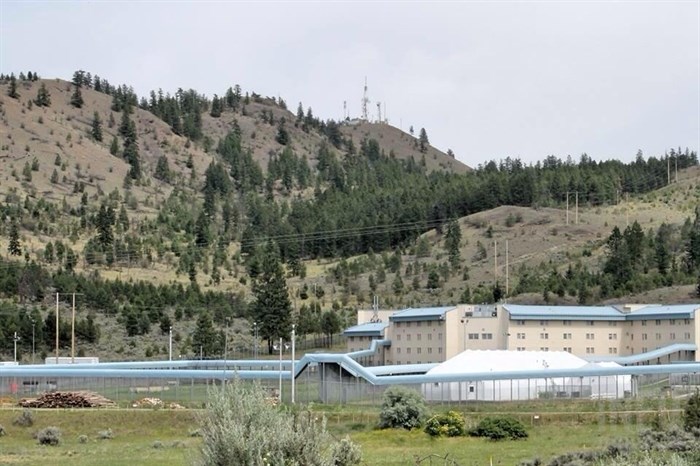
The Kamloops Regional Correctional Centre
(GLYNN BROTHEN / iNFOnews.ca)
August 07, 2015 - 9:00 PM
KAMLOOPS - An order to flag violent inmates at the Kamloops Regional Correctional Centre may help prevent workplace violence, but it might not do much to curb the underlying issues.
The WorkSafe B.C. order to readily identify inmates with a history of violence is a soft approach to the daily safety issues officers face in provincial jails, according to Dean Purdy, the chair of corrections and sheriffs services component of the B.C. Government and Service Employee’s Union.
WorkSafe B.C. reviewed the Kamloops jail after an officer was assaulted June 22. In the attack, the guard sustained multiple blows to the head and bites to his shoulder, arm and wrist.
In his report released July 20, Inspector Vincent Strain recommends officials at the centre develop a system to flag violent inmates after noticing how long it would take to scroll through an inmate's log to find out if he was violent or not.
Purdy says the report fails to recognize the violence officers are routinely exposed to — a systemic problem which he says can be mitigated or corrected with additional staff or caps on inmate to officer ratios.
“This is important for the safety of our officers so we’re hoping (WorkSafe B.C.) will take another look at this, take it seriously and we hope to see some results out of it. We’re very concerned one of our officers will pay the ultimate price one day. That’s not something we want to see," he says. "It’s a violent job…. We would like (WorkSafe B.C.) to mitigate that risk by truly looking at the crux of the problem and that’s the officer to inmate ratios."
While officials at B.C. Corrections say the opening of the 378-cell Okanagan Correctional Centre will combat that issue, Purdy says adding more beds for inmates will carry over the problem to a new facility, rather than address it.
“We keep hearing that the new (centre) will be the solution to the overcrowding and violence but I can tell you that we have empty beds and empty living units throughout the province that could be used to spread out the inmate population and that’s not being done,” he says.
Previous WorkSafe B.C. reports from the last two years suggest staff were exposed to additional risk because of insufficient segregation cells. The temporary solution was holding those inmates in admission and discharge cells within a separate section of the jail.
Corrections spokesperson Cindy Rose was not available for an interview but the Ministry of Justice communications department issued an unattributed statement saying B.C. Corrections held a "positive" meeting to receive clarity on the latest order and describe communication systems already in place to prevent workplace violence. The statement says the ministry welcomes feedback from WorkSafe B.C. and will take action to implement final recommendations from its inspectors.
Camilla Sears, a criminologist and sociology professor at Thompson Rivers University, says flagging inmates could be helpful, but notes the system focuses on maintaining security over inmates, rather than rehabilitating them.
“The idea of (flagging violent inmates) is a good idea and it’s good to see, but it’s not dealing with that underlying problem that needs to be tapped into when you’ve got a lack of resources. If you’re worried about violent incidents, then you’re going to be really focused on security,” she says. “It’s one thing to say ‘okay let’s have (flagging) and let’s do that’ but does that really chip away effectively at what’s really going on?"
Both Purdy and Sears say inmates with mental health issues are the most affected by a lack of resources and when it comes to those with a proclivity for violence, a jail setting can be the perfect storm.
“We’ve really become the default mental health facilities in this province," Purdy says. "Because of the fact they’ve closed the institutions that house people with mental health (issues), they come into our jails. Many of them are not double bunkable. They have to be housed alone. They take up those spaces in the jail that really should be used for inmates (that are difficult to manage) and that’s just not happening."
Purdy says inmate to officer ratios at the Kamloops jail can be one guard overseeing up to 40 inmates on a living unit. In 2002, the cap was set at one officer per 20 inmates. B.C. is the only province in the country with ratios as high as one guard for 72 inmates, Purdy says.
WorkSafe B.C. declined to comment further on the inspection and notice of compliance.
To contact a reporter for this story, email Glynn Brothen at gbrothen@infonews.ca, or call 250-319-7494. To contact the editor, email mjones@infonews.ca or call 250-718-2724.
News from © iNFOnews, 2015